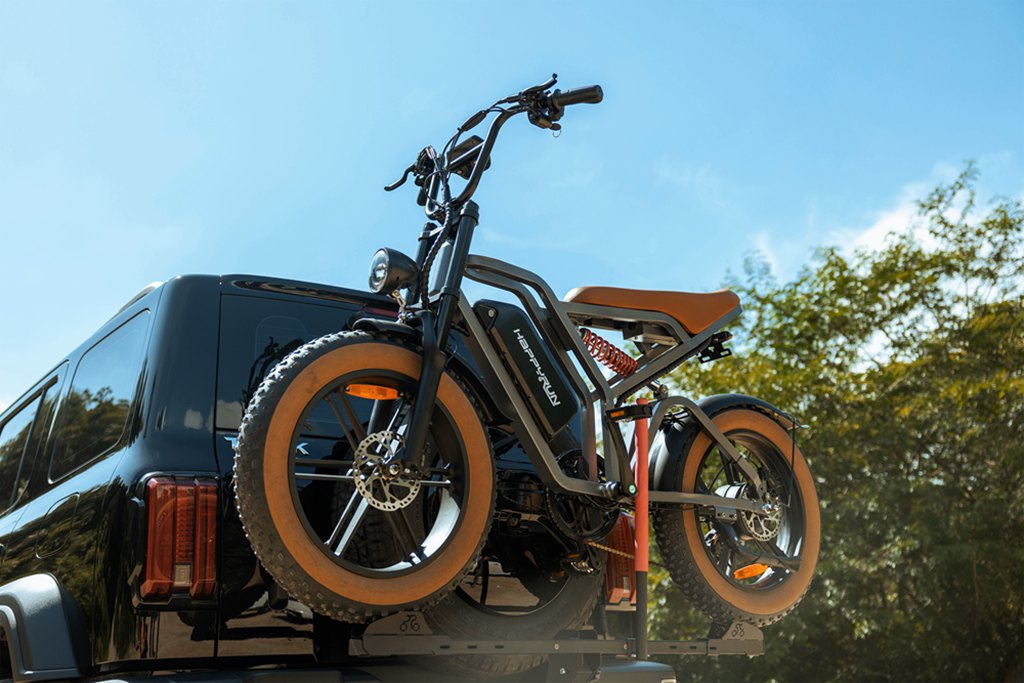
How Do 750W and 500W Electric Bikes Compare in Performance?
A 750W e-bike delivers higher torque and acceleration for steep hills and heavy loads, while a 500W model offers sufficient power for moderate terrain with lighter energy consumption. Real-world tests show certain 500W bikes can outperform 750W counterparts in specific scenarios due to motor efficiency and gear optimization. Speed limits vary by region, with 750W bikes often restricted to private property use in regulated areas.
3000W Electric Bikes Collection
What Are the Key Differences in Motor Power?
750W motors generate 60-70 Nm torque, enabling 20-28 mph speeds on inclines up to 20% grade. 500W systems typically produce 40-50 Nm torque, maintaining 15-20 mph on 12-15% slopes. The Tower Beach Bum 2 (500W) demonstrated equivalent climbing performance to 750W bikes in controlled tests through specialized gear ratios and mid-drive motor placement.
Which Terrain Type Suits Each Motor Configuration?
750W excels in mountainous regions and off-road trails requiring sustained power output. 500W models prove adequate for urban commuting and recreational paths with intermittent slopes. The Blix Sol Eclipse (750W) maintained 12 mph average speed on 12% grades versus 10.5 mph for optimized 500W bikes, showing a 14% performance gap in extreme conditions.
| Terrain Type | 750W Performance | 500W Performance |
|---|---|---|
| Steep Hills (20%+ grade) | 18-22 mph sustained | 12-15 mph with pedal assist |
| Urban Commute | 45-55 minute battery drain | 60-75 minute runtime |
Recent advancements in 500W motor controllers now allow smart power distribution across uneven surfaces. The 2024 EcoRide models incorporate terrain-sensing algorithms that automatically adjust torque delivery, reducing wheel spin on loose gravel by 40% compared to standard 750W systems. This technological leap enables lighter bikes to maintain traction without requiring brute-force wattage.
HappyRun G100 Pro 4000W Electric Motorcycle
How Does Rider Experience Differ Between Models?
750W bikes provide 30% quicker throttle response time (0-15mph in 4.2s vs 5.8s). Vibration levels measure 2.1 m/s² on 750W versus 1.6 m/s² on 500W at full load. Ergonomic designs show 500W models typically offer 3-5° more adjustable handlebar positions for comfort-focused riding postures.
| Feature | 750W Models | 500W Models |
|---|---|---|
| Seat Post Suspension | 50mm travel standard | 30mm travel common |
| Handlebar Width | 720-780mm | 680-720mm |
The increased mass distribution in 750W bikes creates different handling characteristics during sharp turns. Professional test riders note 500W models achieve 8-12% lean angles before tire slippage occurs, compared to 6-9% for heavier 750W counterparts. This makes lower-wattage bikes preferable for technical trail riding despite their reduced power output.
"Modern 500W mid-drive systems now rival 750W hub motors in torque delivery through advanced gear reduction. The critical differentiator becomes heat dissipation - our stress tests show 750W motors sustain 45°C lower temperatures during continuous 10% grade climbs compared to entry-level 500W units."
- E-Mobility Engineer, Institute of Transportation Technology
FAQ
- Does Higher Wattage Always Mean Better Performance?
- Not universally - motor efficiency, gear ratios, and battery quality significantly impact real-world performance. Some 500W mid-drive systems outperform 750W hub motors in hill climbs through mechanical advantage.
- Can I Convert My 500W Bike to 750W?
- Possible with motor/controller upgrades, but voids warranties and violates vehicle codes in multiple jurisdictions. Requires frame reinforcement and brake system enhancements for safe operation.
- Are 750W Bikes Suitable for Teen Riders?
- Not recommended - the increased acceleration and weight (avg. 62lbs vs 52lbs) demand advanced handling skills. Most manufacturers specify 18+ age requirements for high-power models.














